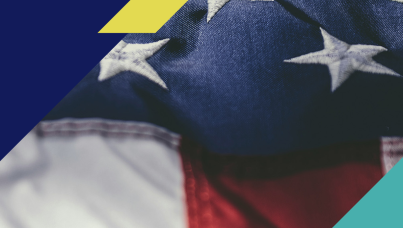Extreme problems from extreme weather
Story after story shows apocalyptic scenes of rushing water subsuming cars, sweeping away homes, and dispelling normal life for many in California. Meanwhile, intense storms are hitting the Southeast. This comes off a holiday travel season where record lows and winter storms halted travel for many.
It’s hard to ignore the wide-reaching and interlocking nature of these stories. Extreme heat and drought made conditions ripe for landslides and downed trees, thus compounding the effects of the enormous amount of rain hitting the West Coast. One disaster fuels another. A vicious cycle.
Extreme weather impacts most people at some point. But, as our polling shows, even as extreme weather touches America, understanding whether these changes are an “act of God” or something people may have exacerbated divides the public.
Below, in five charts, we unpack how the public sees extreme weather.
- Slow but Steady. During the past ten years, Americans have grown increasingly concerned about the environment and climate. While not a top tier problem compared to issues like the economy, it is a consistently sizeable contender in the issue landscape. But still a secondary issue. What do they say? One step at a time.
- Real Deal. Over that same period, nearly all Americans report experiencing more extreme or frequent weather events. There are some differences here by demographic, but it’s clear—increasingly frequent and intense weather is the reality many Americans are facing. The proof is in the pudding.
- Deadly weather. Many of these weather events can be deadly. Since the 1980s, thousands of people have died from the costliest extreme weather that has hit the U.S. Drought and severe storms, the two driving forces behind the destruction in California recently, are among the most deadly. The impact is real.
- Higher costs. Even when adjusting for inflation, extreme weather is getting more expensive. Each decade, the cost-per-year for these disasters grows to staggering heights. The trend is definitely going in the wrong direction. Will it continue? Probably.
- A way forward? Americans are divided on how to address climate change and its ripple effects (extreme weather being one). A majority of Americans want to be proactive. But, many want to wait and see. Yet, again, we see a nation divided –one side red, the other blue. Look at the numbers. The partisan difference is striking.
Extreme weather is real and Americans agree. This is now our reality. But, not all people agree on what is causing this and how to address it. Polarization rears its powerful head yet again.
Even as these conversations play out among the public, the tangible and deadly costs of these extreme weather events are undeniable and growing. As the consequences pile up, the nation remains divided on climate and a way forward.



